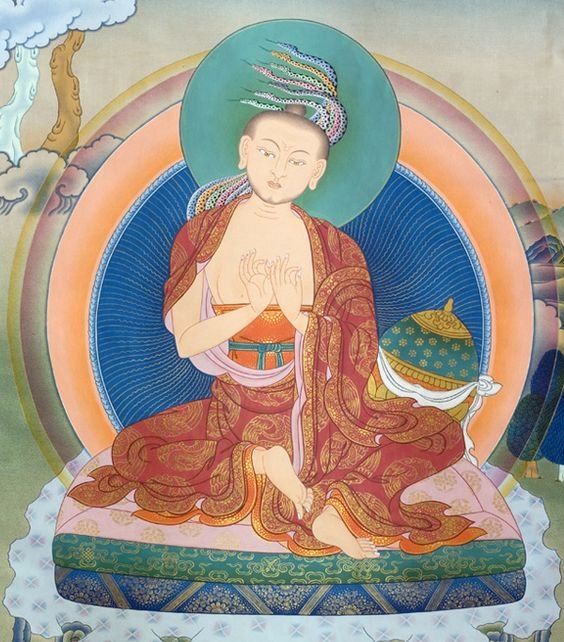*This was a paper I chose to write for my philosophy of religion class. I really liked the way it turned out. Please add suggestions and feedback in the comments. I appreciate the community's help :)
JANUARY 15, 2018
The ultimate sacred reality that Nagarjuna describes in his work “An Analysis of Nirvana” gives the uninformed reader a new perspective of an ultimate sacred reality. The excerpt begins with an opposing question for thought to guide his thorough analysis of what cannot be comprehended with a mere glance of instruction. The question is: “If all existence is empty, there is no origination or destruction. Then whose nirvana through elimination [of suffering] and destruction [of illusion] would be postulated?”(Nagarjuna, 76) . In other words, if there is no beginning or end to an empty existence, then which nirvana is to be achieved? Nagarjuna replies by asking the opposite of the question replacing the word “empty” with “non-empty”. Nirvana is something that cannot be existing or non-existing according to Nagarjuna. Nagarjuna tells the reader that if something exists then it must be constructed and involve a deconstruction, or and ending such as death or old age or becoming rotten (Nagarjuna. 76). The same principles apply to what is a non-existing thing. A non-existing thing has attributes opposite from an existing thing. Both existing and non-existing things have a dependent and an independent quality associated with their existence. All things come from other things. All non-existing things come from the idea of existing things. Nirvana is neither existent nor nonexistent. The passage suggests that maybe Nirvana is both existing and non-existing at the same time? Nagarjuna says that this also cannot be because to be both existing and non-existing involves conditions to operate within. Nirvana is a “non-composite product, while both an existing and non-existing thing are composite products”. (Nagarjuna, 77) Nagarjuna gives the reader an analogy of light and darkness, saying both cannot exist in the same place at once. One must prove that nirvana is and is not an existing or non-existing thing. The Buddha himself has not demonstrated this concept to us after his death or on Earth. (Nagarjuna, 77) I believe Nagarjuna uses Buddha as an example because the Buddha supposedly achieved nirvana. Nagarjuna argues that nirvana is not even between existence and nonexistence, and existence and nonexistence is not between nirvana. He talks about the extreme limit of nirvana and says if you are limited then nirvana will be tainted. The darmas, he explains, have no set limit and are not even limitless. This, he says, is neither permanent nor impermanent. (Nagarjuna, 77) He concludes with saying that if one stops accepting reality, then one stops accepting knowledge and development the self.

The argument by Nagarjuna is one that is beyond rational. One cannot even comprehend what is rational when reading this passage. The Analysis of Nirvana is consistent and inconsistent throughout the passage. I don’t believe that one can refute what cannot be refuted or even imagined by the common man. The argument of what nirvana is or is not or is not even not is a bit difficult to comprehend. The reason I chose this reading as the most rational ultimate sacred reality is because it is what we do not know being argued for why we do not know. William James constructs an argument for a “right” to believe. The argument did not appeal to me as rational because he gives you a Pascal wager with religion. It is not rational for someone to throw in with something just because there is no loss in the end. If it were popular belief that one MIGHT receive an afterlife, but one must live his/her life on Earth abiding to an arrogant dictatorship that told you what to say, do, and think is not rational. Alvin Plantinga tells us that if one has the reasons to believe in something, one can believe in pretty much anything. He claims that Christians believe that belief in God is properly basic and the one can replace the word God with anything, even a pumpkin. The argument is rational to me because if people are going to make up standards as they go, then its fair game. I did not choose this article because I felt that when one is dealing with an idea that they cannot comprehend then they should not talk about it. How arrogant are those who speak of the divine with confidence of knowing who HE is and what HE wants. The argument that Nagarjuna is making is an argument of something beyond comprehension. He is consistent in his contradictions of contradictions cancelling them out into something that cannot be fathom by common man. The concept of nirvana is not one to even be discussed because we do not know what is, what cannot be. The only way to do this is to be limitless and limited without denying knowledge and what is “real”. I do not see any arguments against this argument and I cannot find any flaws or strengths in this argument. The argument is what it was meant to be: an explanation of what cannot be explained. Why? Nirvana is not intended to be taught, just as it says in the text “no dharma anywhere has been taught by the Buddha of anything.” (Nagarjuna, 77) I believe this means that nirvana is acquired through experience and self-teaching through a life lived with limited suffering. One cannot read about nirvana and understand it which is why the reading is as vague as it reads. The vagueness however is very informing in a weird way. The reading teaches the reader about what we cannot comprehend without comprehension of a thing that came from that thing that is neither existing nor non-existing.